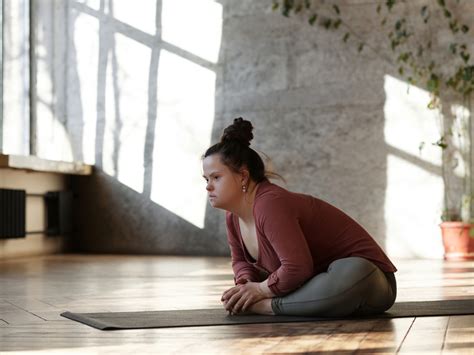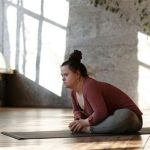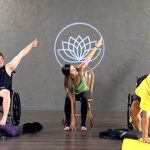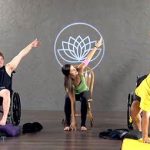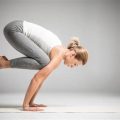Inclusive Yoga for People with Disabilities: Tailoring Practices for Comfort and Accessibility
Yoga has been long celebrated for its numerous mental, physical, and emotional benefits. However, traditional yoga practices often overlook the needs of individuals with disabilities. With thoughtful adaptations, yoga can be made accessible, ensuring that everyone, regardless of their physical limitations, can reap its benefits. In this article, we explore key concepts, historical development, current practices, and guidelines for implementing inclusive yoga for people with disabilities, addressing stakeholder needs and ethical considerations. We’ll also analyze future research directions and emerging trends in this area.
Introduction
Yoga offers a holistic approach to improving overall well-being, blending physical postures, breathing exercises, and meditation. For people with disabilities, engaging in yoga can seem daunting. Limited mobility, chronic pain, or neurological conditions often prevent participation in standard classes. Fortunately, with modifications, individuals with varying abilities can engage in yoga, enhancing their quality of life. This guide delves into how yoga can be adapted to accommodate these unique needs, offering practical insights for teachers, practitioners, and caregivers.
Key Concepts
- Adaptation: Modifying poses to suit individual needs, focusing on comfort, balance, and alignment.
- Chair Yoga: A variation of yoga practiced while seated, especially beneficial for individuals with limited mobility.
- Restorative Yoga: A form of yoga that emphasizes deep relaxation using props like blankets, bolsters, and blocks.
- Pranayama: Controlled breathing techniques that can be practiced by individuals with limited mobility.
- Sensory Awareness: Understanding how sensory processing disorders impact the experience of yoga and how to modify practice accordingly.
Historical Context
Yoga originated in ancient India more than 5,000 years ago, evolving into various forms and practices across different cultures. Historically, yoga has been seen as a practice to achieve both physical and mental equilibrium. However, the rise of modern yoga in the West largely emphasized physical fitness and flexibility, often marginalizing individuals with disabilities. It wasn’t until the late 20th century that adaptations specifically for people with disabilities began to emerge, sparked by a broader societal push for inclusivity in physical wellness practices.
Current State Analysis
In today’s yoga landscape, more inclusive practices are gaining visibility. Many instructors now offer adaptive yoga classes, often designed with the use of chairs, blocks, straps, and other props to assist those with mobility issues. Programs tailored for veterans with PTSD, people with cerebral palsy, amputees, and individuals with chronic pain have been established in various countries. Despite this progress, access to adaptive yoga classes remains limited, and there is a lack of standardized training for instructors. Moreover, mainstream yoga studios still cater primarily to able-bodied individuals, creating barriers for people with disabilities.
Practical Applications
Adapting yoga for people with disabilities requires understanding each person’s unique challenges and offering modifications that align with their abilities. Here are practical ways to adapt yoga:
- Use of Props: Blocks, straps, blankets, and chairs can provide additional support, allowing participants to modify postures and reduce strain.
- Breathing Exercises (Pranayama): For individuals unable to perform certain poses, focusing on breathing techniques helps promote relaxation and mindfulness.
- Chair Yoga: Ideal for individuals with lower body limitations, chair yoga helps facilitate stretches and movements in a seated position, enhancing accessibility.
- Restorative Practices: Focuses on relaxation using props, making it accessible for individuals with chronic pain or fatigue conditions.
- Virtual Classes: Online yoga classes provide flexibility for those unable to travel to studios or access in-person classes.
Case Studies
| Case Study | Condition | Adaptation Used | Outcome |
|---|---|---|---|
| John | Spinal Cord Injury | Chair Yoga with Blocks and Straps | Improved mobility and reduced pain |
| Lisa | Multiple Sclerosis | Restorative Yoga | Better energy management and reduced fatigue |
| Mark | Amputation | Seated Modifications with Props | Improved balance and mental clarity |
| Susan | Cerebral Palsy | Focus on Breathing and Gentle Stretches | Increased relaxation and reduced spasticity |
| David | Chronic Pain | Restorative Yoga with Bolsters | Reduced pain levels and improved sleep quality |
Stakeholder Analysis
Key stakeholders in the adaptation of yoga for individuals with disabilities include:
- Yoga Instructors: Need specialized training to understand the needs of participants with disabilities and adapt practices accordingly.
- Healthcare Providers: Can refer patients to adaptive yoga programs as part of holistic treatment plans.
- Disabled Individuals: Benefit from increased accessibility, autonomy, and a sense of community.
- Policy Makers: Must ensure that wellness programs are inclusive and adequately funded to provide resources for adaptive practices.
- Yoga Studios: Need to offer more accessible classes and facilities to broaden participation.
Implementation Guidelines
To successfully implement adaptive yoga programs, instructors and organizations can follow these guidelines:
- Inclusive Class Design: Ensure that classes are designed for a range of abilities, offering modifications and accessibility options.
- Instructor Training: Educate instructors on adaptive techniques and how to work with individuals who have a variety of disabilities.
- Accessible Studio Space: Make physical spaces accessible, with ramps, wide doorways, and specialized equipment available.
- Community Engagement: Foster a sense of inclusivity and community by engaging with disability organizations and advocacy groups.
- Progress Monitoring: Track participants’ progress over time and adjust classes to accommodate changing needs.
Ethical Considerations
Inclusive yoga practice raises several ethical considerations:
- Equity: Ensuring that people with disabilities have the same access to yoga classes as their able-bodied peers.
- Autonomy: Giving individuals the choice to modify or opt-out of certain postures without judgment or pressure.
- Confidentiality: Respecting participants’ privacy regarding their disabilities and health conditions.
- Informed Consent: Clearly communicating any risks involved in yoga practices, especially for individuals with health conditions.
Limitations and Future Research
Despite the growing awareness of adaptive yoga, challenges remain. Limited access to well-trained instructors and appropriate facilities are significant barriers. Further research is needed on the long-term benefits of yoga for specific disabilities, as well as the psychological and social impacts of inclusive practices.
Future research should focus on creating standardized guidelines for adaptive yoga and exploring the use of technology, such as virtual reality, to enhance the accessibility of yoga for people with severe disabilities. Additionally, studies should investigate the impact of adaptive yoga on mental health conditions such as anxiety and depression, particularly in populations with limited mobility.
Expert Commentary
Experts in the field of adaptive yoga emphasize the importance of inclusive wellness practices. According to leading instructors, the shift towards greater accessibility not only benefits individuals with disabilities but also enriches the broader yoga community. As more people become aware of adaptive practices, the stigma around disabilities in fitness is beginning to dissipate.
Moreover, advocates argue that adaptive yoga fosters a greater sense of self-empowerment for individuals who have been traditionally excluded from physical wellness activities. The future of yoga is not just about stretching the body, but about stretching our understanding of inclusivity and care.
